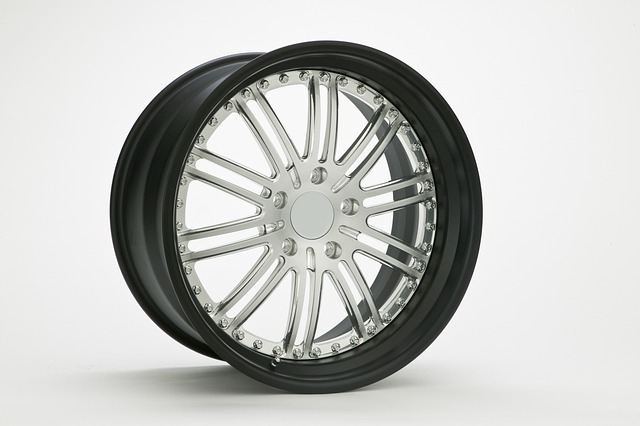Looking to register your car in California? Navigating the process can seem daunting, but with the right preparation, it’s smoother than you think. This guide breaks down every step of the California car registration process, from understanding the requirements to performing crucial VIN verification. We’ll walk you through gathering essential documents, submitting applications and fees, and finally receiving your California vehicle registration certificate.
- Understanding the California Car Registration Process
- Gathering Necessary Documents for VIN Verification
- Performing Vehicle Identification Number (VIN) Check
- Submitting Applications and Fees to the DMV
- Receiving Your California Vehicle Registration Certificate
Understanding the California Car Registration Process

Understanding the California Car Registration Process
In California, car registration is a crucial step for all vehicle owners. It involves several key processes designed to ensure safety and legal compliance. The journey begins with accurate identification of your vehicle through its unique Vehicle Identification Number (VIN). This VIN verification is an essential first step as it allows the state to cross-reference your car’s details against their records. Once your VIN has been confirmed, you can proceed with gathering necessary documents, including proof of insurance, a completed registration application, and payment for the registration fee.
The California Department of Motor Vehicles (DMV) plays a central role in managing these processes. They offer various options for submitting applications, including in-person visits, mail-in forms, or utilizing their online platform. For added convenience, mobile VIN verification services have emerged as game-changers. These services allow owners to initiate the registration process from the comfort of their homes by providing a simple and efficient way to confirm vehicle details, making the entire experience smoother and more accessible for California drivers.
Gathering Necessary Documents for VIN Verification

Before registering your car in California, you’ll need to gather several important documents for VIN (Vehicle Identification Number) verification. This process is a crucial step in ensuring that your vehicle meets all legal requirements. The first step is to obtain your vehicle’s VIN, which can usually be found on the dashboard or in the driver’s side door jamb. Once you have this unique identifier, it’s time to gather essential documents like your car’s title, registration certificates from previous states (if applicable), and proof of insurance.
Additionally, for a smoother process, consider having a mobile VIN inspection done by a professional verifier. This service allows for on-site verification, ensuring that all details match without the hassle of visiting a DMV office. A mobile vin inspector can help you navigate any potential issues early on, making the registration process more efficient. Remember to keep these documents organized and readily available to streamline the California car registration procedure.
Performing Vehicle Identification Number (VIN) Check

Before registering your car in California, performing a Vehicle Identification Number (VIN) check is a crucial step. This process involves verifying the authenticity and condition of your vehicle using its unique VIN. You can conduct this check through various official channels, including online databases or by visiting a California Department of Motor Vehicles (DMV) office. A mobile vin verification service, often provided by specialized apps or companies, offers an alternative option, allowing you to complete the inspection remotely.
The VIN is located on different parts of your vehicle, such as the dashboard, engine compartment, and door frame. By entering this number into a reliable database, you can access vital information about the car’s history, including ownership records, maintenance logs, and any reported accidents or damage. This step ensures that you’re aware of any potential issues and helps in making an informed decision when registering your vehicle. Additionally, using a mobile vin inspection tool or service can save time and effort, especially if you’re busy or prefer the convenience of completing formalities from anywhere.
Submitting Applications and Fees to the DMV

After gathering all the necessary documents, it’s time to submit your applications and fees to the California Department of Motor Vehicles (DMV). This crucial step involves filling out Form SM-45, which is the Application for Title and Registration, along with any associated fees. Ensure that your vehicle’s VIN (Vehicle Identification Number) passes the verification process through a mobile vin verifier or mobile vin inspection service, as this is an essential part of the registration procedure in California.
When submitting your application, be sure to include accurate information about the vehicle’s make, model, year, and other identifying details. Additionally, provide proof of insurance and any applicable fees for smog testing, if required. The DMV will then process your request, which may take some time, depending on their current workload. Properly completing these steps ensures that you’re not only compliant with California’s regulations but also helps to ensure a smooth registration experience.
Receiving Your California Vehicle Registration Certificate

After completing the registration process, it’s time to receive your official California Vehicle Registration Certificate. This document is crucial for legal driving in the state and confirms that your vehicle meets all required standards. Once approved, the Department of Motor Vehicles (DMV) will issue a registration certificate, which includes vital information about your car, such as its make, model, year, and unique Vehicle Identification Number (VIN).
The VIN is a 17-character code that serves as a fingerprint for your vehicle. It’s essential to ensure the accuracy of this number during the registration process, which can be easily verified through a mobile VIN inspection or verification service. This step is vital to maintaining accurate vehicle records and ensuring compliance with California’s regulations.
Registering a car in California involves several straightforward steps, from gathering essential documents for VIN verification to submitting applications and fees at the Department of Motor Vehicles (DMV). After completing these processes, you’ll receive your California Vehicle Registration Certificate, marking the official recognition of your vehicle within the state’s regulatory framework. Remember to conduct a thorough VIN check during the initial stages to ensure all details are accurate, making the entire registration experience seamless.
